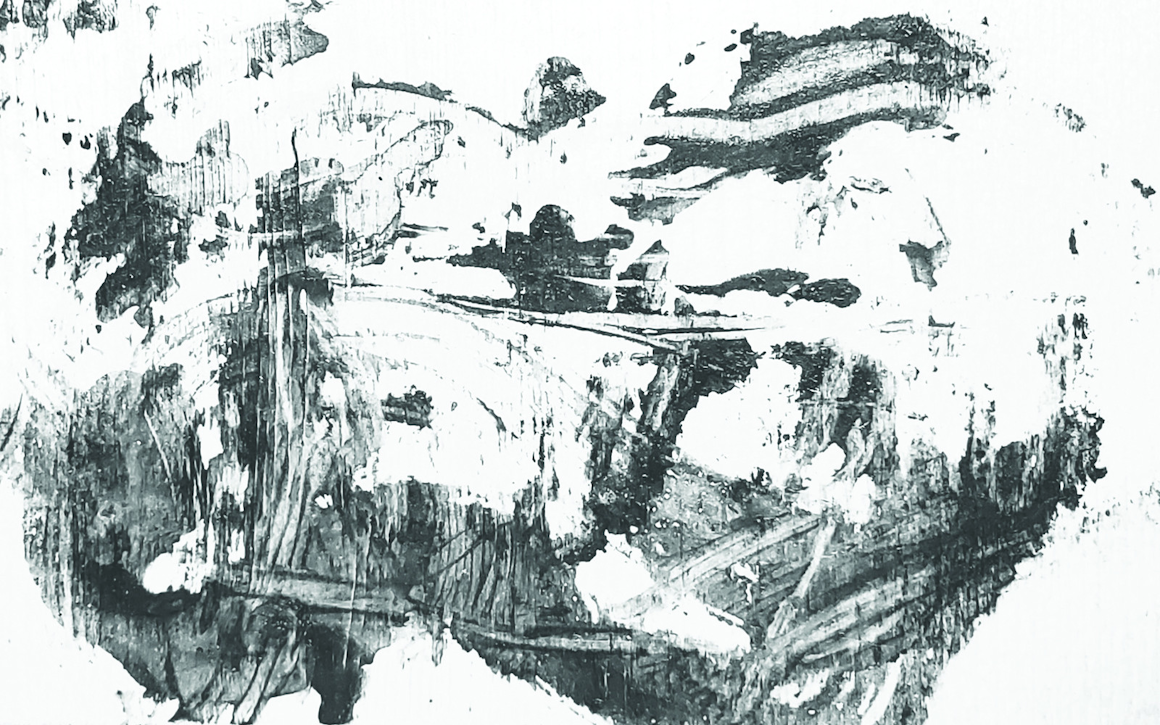

Past Exhibitions
.jpg)
The Collision Gallery has featured a number of artists and groups in the space. Scroll down for more details about past exhibitions the Collision Gallery has hosted.
Do Computers Worry You & Greenlight: Carlow
Collision Gallery presents two new exhibitions from Simon Fuh and Matt Nish-Lapidus.
November 17 to December 19, 2022.
Exhibition essay written by Letticia Cosbert Miller.
DO COMPUTERS WORRY YOU, Matt Nish-Lapidus’ current body of work, continues his exploration into the poetics, material, and politics of computation. Custom circuit boards, networks, and artist-written software come together with industrial and domestic materials, found texts, and bespoke algorithms imagining a more expressive, personal, and poetic computer.
––––
Simon Fuh's Greenlight: Carlaw is a multi-channel sound installation inspired by a group of teens that were caught squatting in a vacant house for sale in Toronto’s east end. Unfolding over the course of an hour, the work imagines a fictional tenant living below the teens, placing viewers in the position of that sonic “voyeur” beneath them, as their movements, conversations, and activities are all heard as though passing through the floor.
This exhibition is generously supported by the Canada Council of the Arts, the Ontario Arts Council and Collision Gallery and Studios.
View Exhibition Here
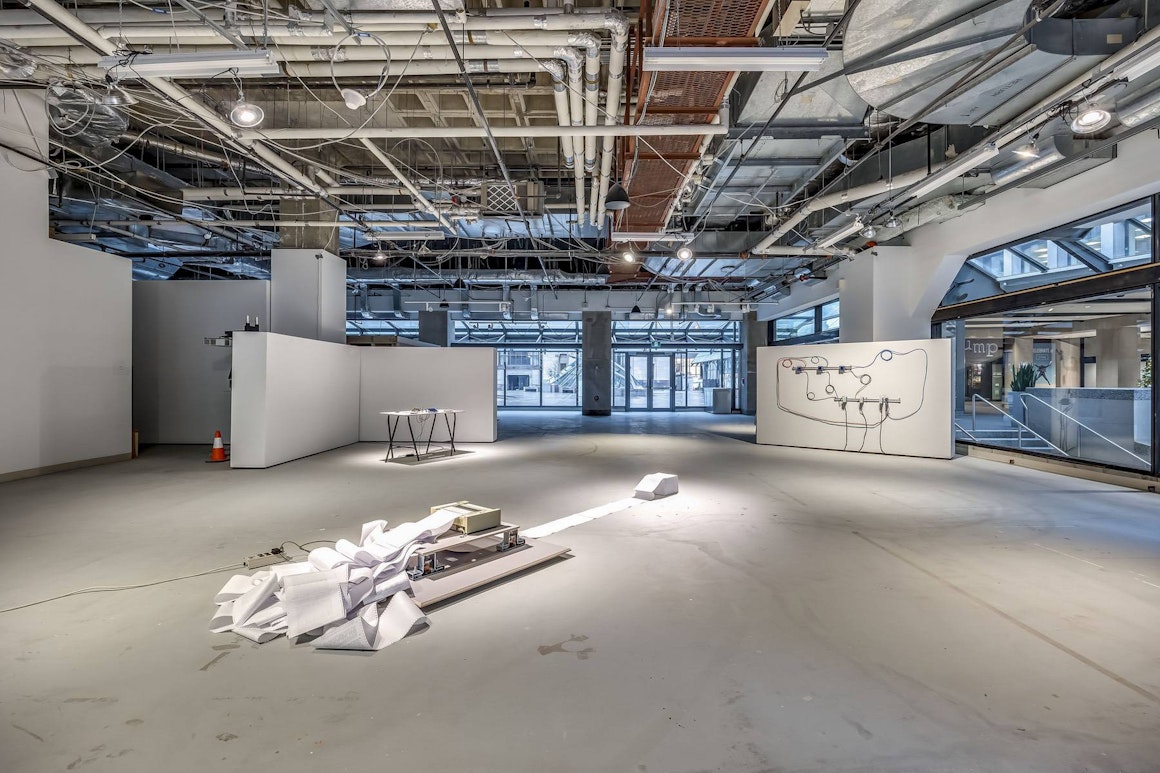
Ships in the Night
This exhibition introduced the five artists that took part in the inaugural Collision Studio cohort located on the concourse level at Commerce Court. Their diverse practices seen here represented existing finished work as well as new ideas, processes, and experiments. Throughout 2022, these artists developed new bodies of work which were presented in the gallery in the fall.
Featured artists: Simon Fuh, Matt Nish-Lapidus, Sophia Oppel, Miles Rufelds, and Alvin Luong
View Exhibition Here
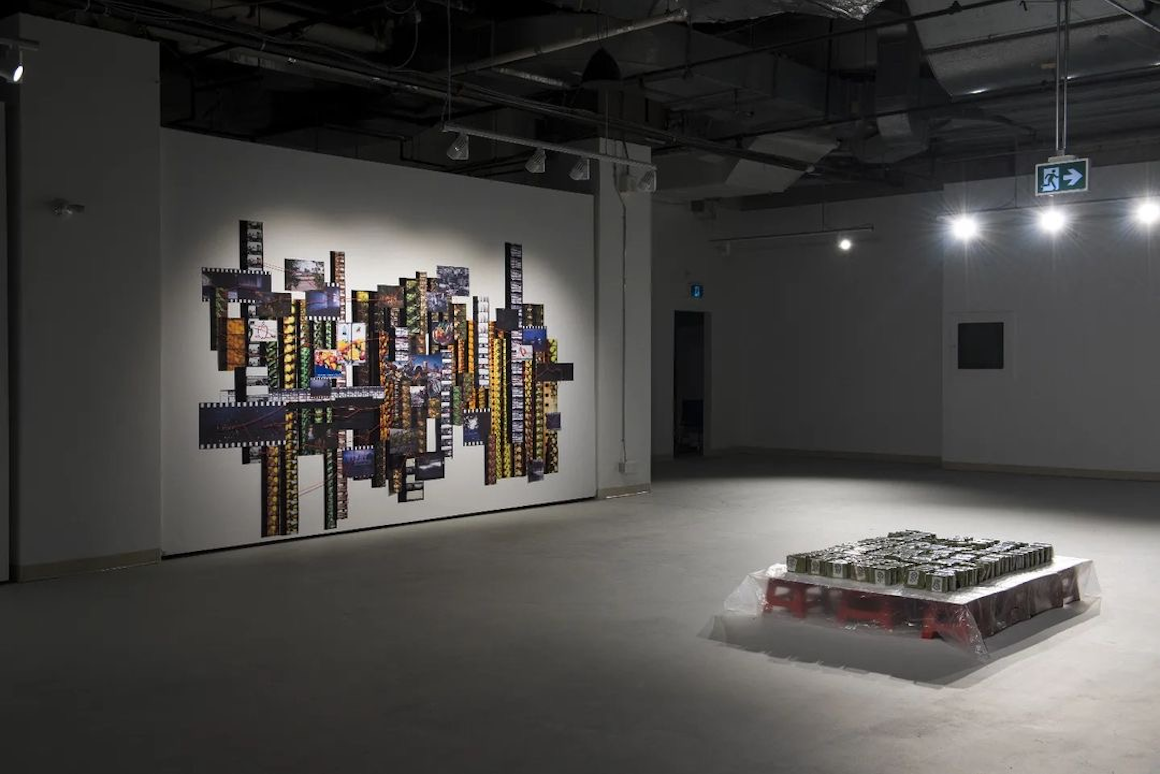
Guided Distractions
Guided Distractions 2.0 (GD2.0) is an exhibition of student work from Daniels
Faculty of Architecture, Landscape and Design. It is a fourth year undergraduate
course led by Sessional Instructor Reza Nik. It was a course in which
experimental and critical thinking was applied to a specific site within Parkdale
with an emphasis on the existing community.
View Exhibition Here
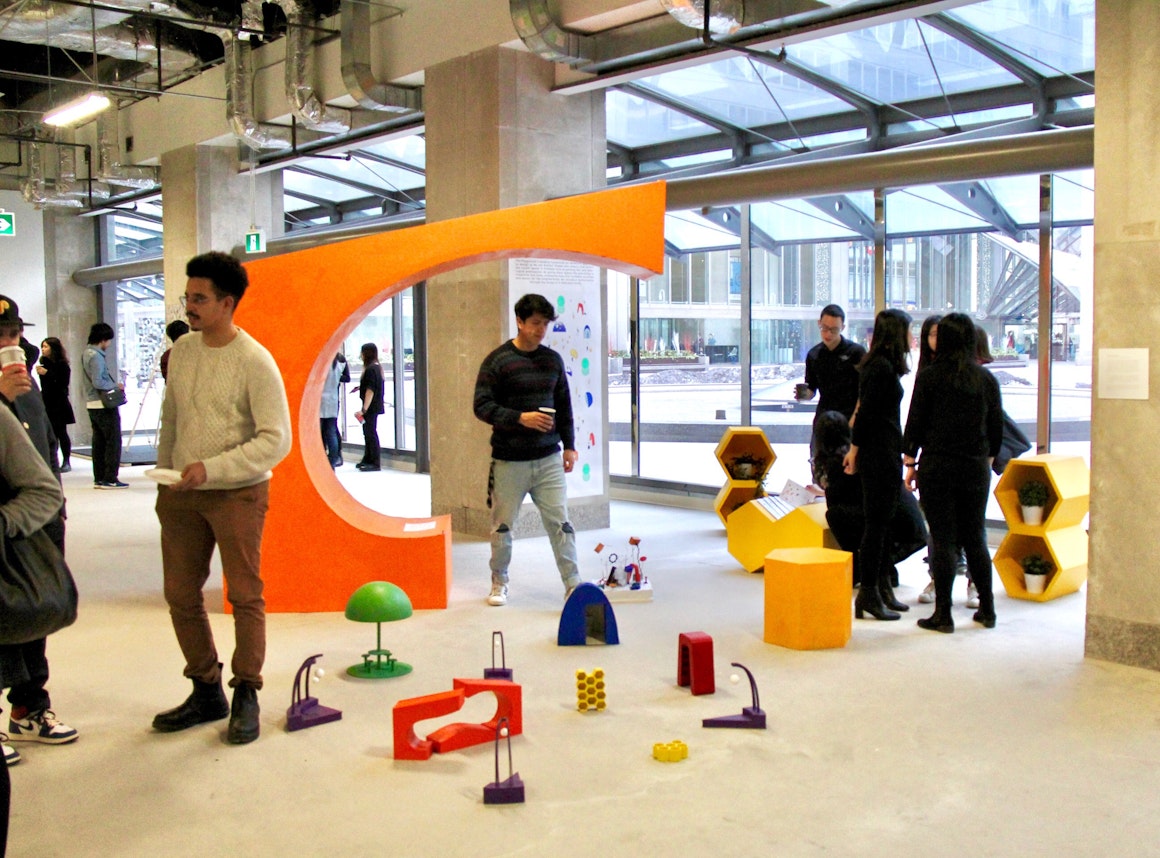
Project GUNK
Project GUNK is named for "junk" and for "gomi" a Japanese word for "dust" and "garbage." This exhibition explores and exposes our wasteful material culture by giving attention to the forgotten or dismissed. The artists aim to develop an alternative to Toronto's current "continuum" within the landscape of the city.
View Exhibition Here
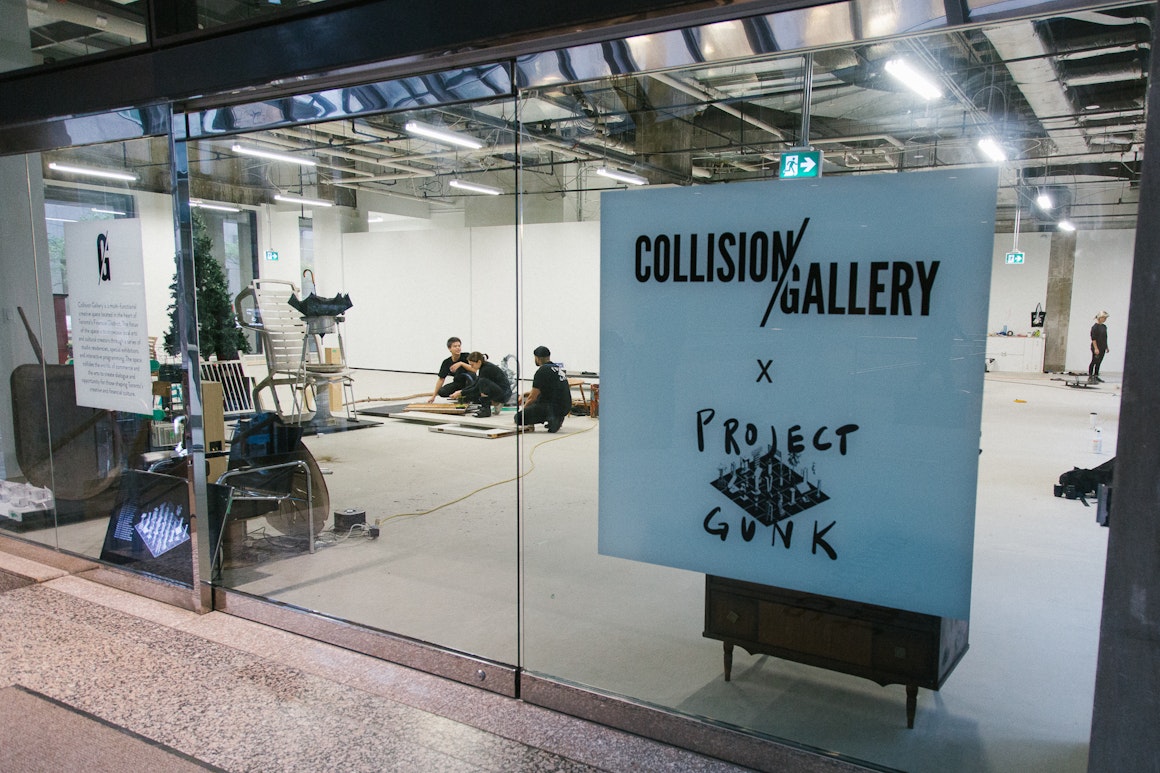
Akin X Collision Residency
The Akin X Collision Residency is a partnership with the Collision Gallery and Akin Collective. As part of a year long studio space rental, selected Akin artists will be immersed within a community of peers and the broader public, with potential opportunities for engagement with a huge number of daily passers by. Studio members were encouraged to develop and expand their individual practices while engaging with the public in new ways.
View Exhibitions Here
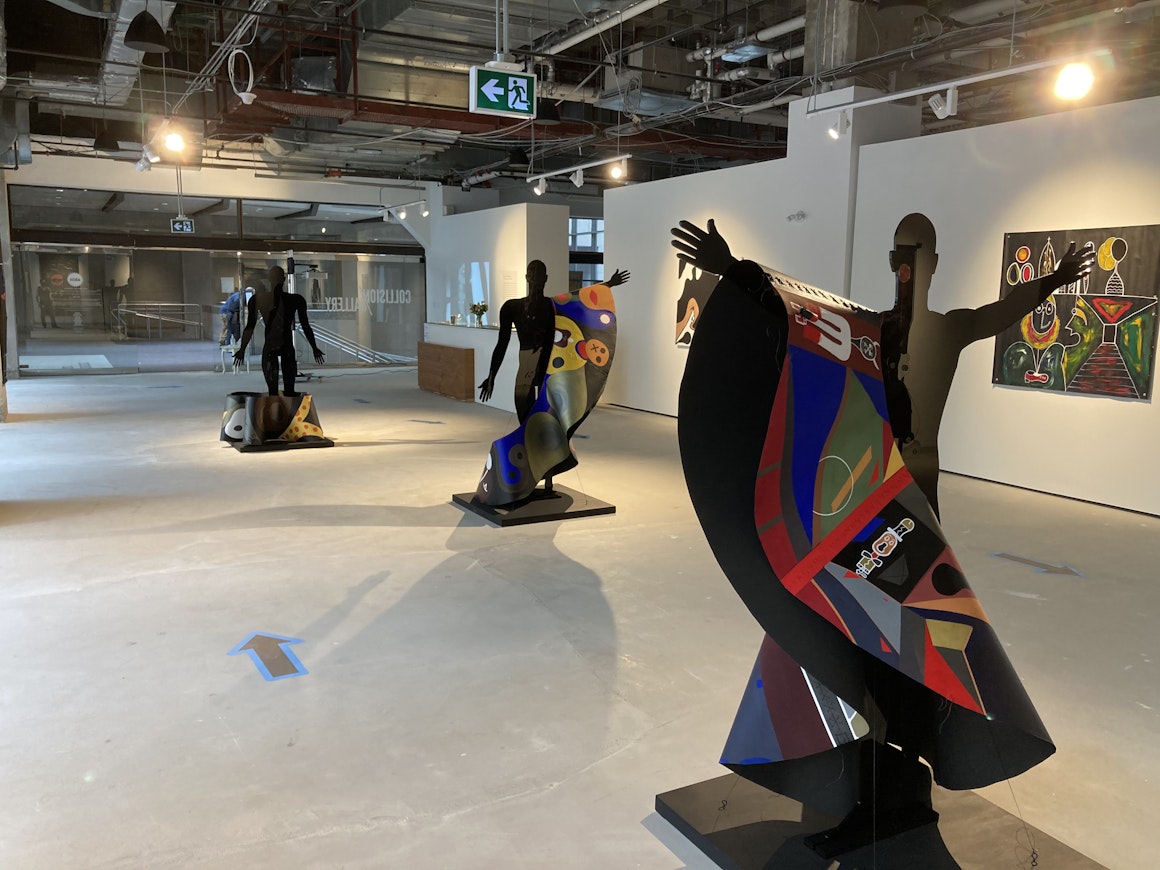
Myseum Intersections
Myseum Intersections is an annual city-wide arts and culture festival that explores Toronto through intersectional perspectives. Myseum Intersections featured two exhibits in the Collision Gallery from April 2021 to June 2021.
View Exhibitions Here
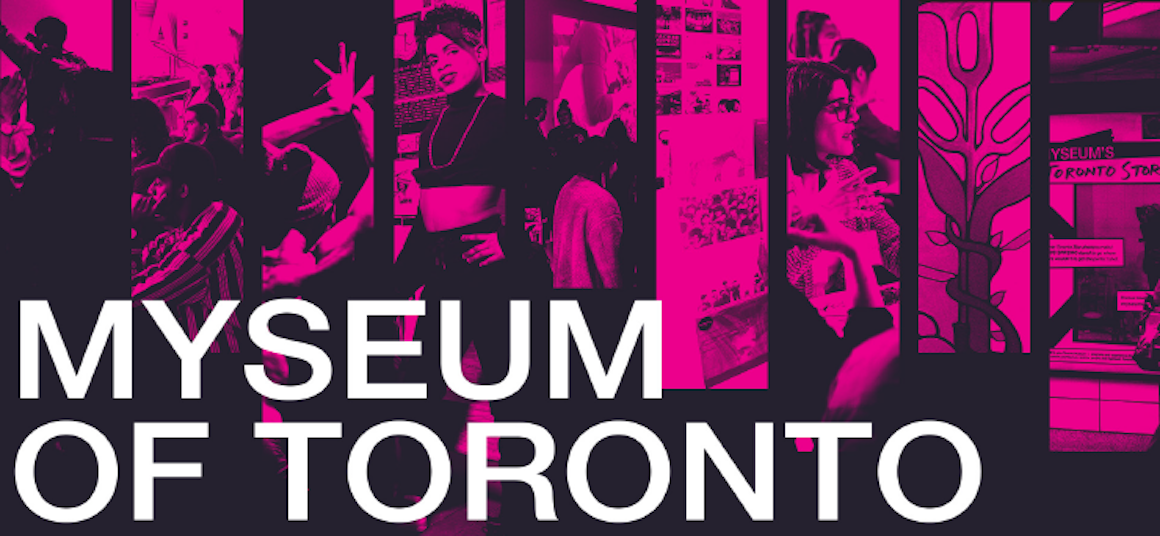
Trading Floor 1.0
Trading Floor was a combined effort by SHEEEP Studio and New Currency to create a space for artists to gather and share ideas and beliefs. Growth of community and culture can come from activating and programming spaces, serving as a nexus of concentrated resources for artists amidst a culture of old institutions and exclusivity.
Learn More
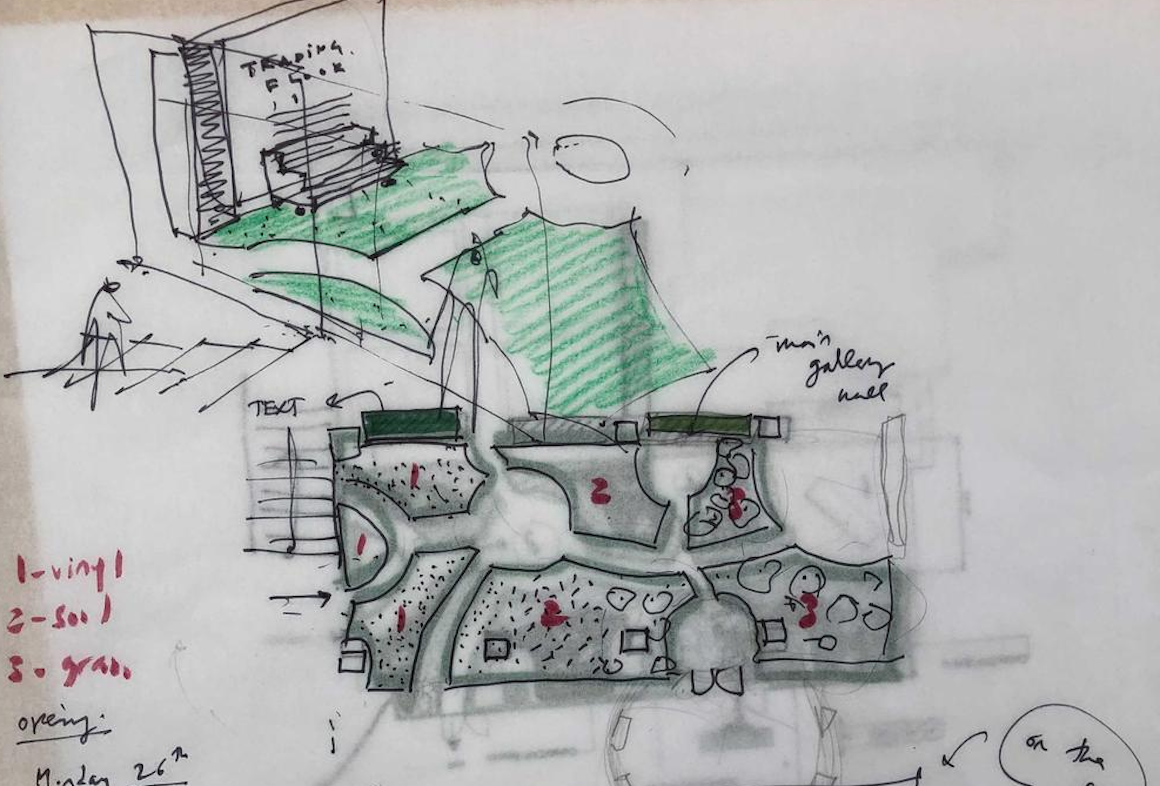
ArtworxTO Pop-Up Hub
Locating Self Care in Urban Centres continues the conversation started by Black and Indigenous curators and writers on care as methods of resistance and sovereignty. Artists Laura Grier and Susan Blight consider self-care as manifested through body, land, and community, extending into the gallery itself as a place of respite within the downtown core, a space often unwelcoming of Indigenous presence.
View Exhibition Here
